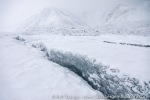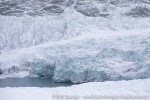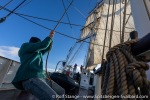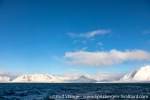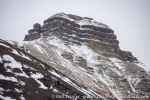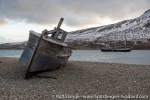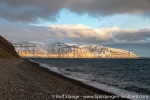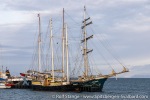-
current
recommendations- Liefdefjord
New page dedicated to one of Spitsbergen's most beautiful fjords. Background information and many photos.
- New Spitsbergen guidebook
The new edition of my Spitsbergen guidebook is out and available now!
- Liefdefjord
New page dedicated to one of Spitsbergen's most beautiful fjords. Background information and many photos.
Page Structure
-
Spitsbergen-News
- Select Month
- May 2025
- April 2025
- March 2025
- February 2025
- January 2025
- December 2024
- November 2024
- October 2024
- September 2024
- August 2024
- July 2024
- June 2024
- May 2024
- April 2024
- March 2024
- February 2024
- January 2024
- December 2023
- November 2023
- October 2023
- September 2023
- August 2023
- July 2023
- June 2023
- May 2023
- April 2023
- March 2023
- February 2023
- January 2023
- December 2022
- November 2022
- October 2022
- September 2022
- August 2022
- July 2022
- June 2022
- May 2022
- April 2022
- March 2022
- February 2022
- January 2022
- December 2021
- November 2021
- October 2021
- September 2021
- August 2021
- July 2021
- June 2021
- May 2021
- April 2021
- March 2021
- February 2021
- January 2021
- December 2020
- November 2020
- October 2020
- September 2020
- August 2020
- July 2020
- June 2020
- May 2020
- April 2020
- March 2020
- February 2020
- January 2020
- December 2019
- November 2019
- October 2019
- September 2019
- August 2019
- July 2019
- June 2019
- May 2019
- April 2019
- March 2019
- February 2019
- January 2019
- December 2018
- November 2018
- October 2018
- September 2018
- August 2018
- July 2018
- June 2018
- May 2018
- April 2018
- March 2018
- February 2018
- January 2018
- December 2017
- November 2017
- October 2017
- September 2017
- August 2017
- July 2017
- June 2017
- May 2017
- April 2017
- March 2017
- February 2017
- January 2017
- December 2016
- November 2016
- October 2016
- September 2016
- August 2016
- July 2016
- June 2016
- May 2016
- April 2016
- March 2016
- February 2016
- January 2016
- December 2015
- November 2015
- October 2015
- September 2015
- August 2015
- July 2015
- June 2015
- May 2015
- April 2015
- March 2015
- February 2015
- January 2015
- December 2014
- November 2014
- October 2014
- September 2014
- August 2014
- July 2014
- June 2014
- May 2014
- April 2014
- March 2014
- February 2014
- January 2014
- December 2013
- November 2013
- October 2013
- September 2013
- August 2013
- July 2013
- June 2013
- May 2013
- April 2013
- March 2013
- February 2013
- January 2013
- December 2012
- November 2012
- October 2012
- September 2012
- August 2012
- July 2012
- June 2012
- May 2012
- April 2012
- March 2012
- February 2012
- January 2012
- December 2011
- November 2011
- October 2011
- September 2011
- August 2011
- May 2011
- April 2011
- March 2011
- February 2011
- January 2011
- December 2010
- November 2010
- September 2010
- August 2010
- July 2010
- June 2010
- May 2010
- April 2010
- March 2010
- February 2010
- November 2009
- October 2009
- August 2009
- July 2009
- June 2009
- May 2009
- April 2009
- March 2009
- February 2009
- January 2009
- December 2008
- November 2008
- October 2008
- August 2008
- July 2008
- June 2008
- May 2008
- April 2008
- March 2008
- February 2008
- April 2000
- Select Month
-
weather information
-
Newsletter

| Guidebook: Spitsbergen-Svalbard |
Home →
Yearly Archives: 2022 − News
St. Jonsfjord – Isfjord … and: end of season
Stormy times! What a luck that we have got weatherforcasts these days, which are not always as good as one might wish but nevertheless give us a clue when trouble is on its way so we can usually find our way around it, provided we have got enough time. So for now, we spent a rather grey, but nevertheless very interesting and good morning in St. Jonsfjord. Then we sailed down Forlandsund and into Isfjord, which was a bit of a bumpy road, but within reason (some of those less acquainted to wind, seas and small ships may have a different view on this, though).
We spent our last full day all the way in Isfjord, namely in Billefjord. Which was also pretty windy, but that didn’t keep us from spending a beautiful day there before it was time to set course for Longyearbyen.
Where this voyage came to its end. A beautiful voyage, full of interesting and exciting experiences in the arctic autumn, if something such as this actually exists (it is, actually, a rather short transition from summer to winter). We did and saw so much, there were so many highlights, such as the sunny day in Lomfjord or the landing on Moffen with the curious walruses, to mention just two out of many.
A huge thanks to everybody who has contributed to all this, to everything that we could see and do in safety and good spirits! All of you who joined us for these exciting days, my good fellow colleagues Daniel, Irene and Martyna and of course Captain Jonathan and his good crew! You were fantastic, and I am looking forward to future trips with all of you!
This is, as far as I am concerned, the end of the arctic sailing season 2022. A long series of very good, amazing, intense voyages on various small and very small sailing ships, from Meander to Antigua and Arctica II and back again. I am thankful for every single day of it!
Gallery – St. Jonsfjord to Isfjord – 19th – 22th September 2022
- gallery anchor link: #gallery_2447
Click on thumbnail to open an enlarged version of the specific photo.
Polar bear incident in Ekmanfjord
Today (Wednesday, 08th August), a person was injured and a polar bear killed during an accident at Sveaneset in Ekmanfjord.
Not much is known so far in public, but a polar bear came into a camp with 25 French tourists. A woman received injuries to her arm, but her conditions appears not to be life threatening.
The polar bear was shot at during the event and it is now reported dead.
Further details are not available at the moment.
Spitsbergen with SV Antigua: Photos & short online diary
Last week we finished the latest arctic voyage with SV Antigua in Spitsbergen. Now there are several pages with photo galleries and short narrations available to illustrate this beautiful journey. It is a privilege to experience this and it is a pleasure to share it here with everybody who might be curious – it was an amazing trip and it is certainly worth having a look at the pictures. Click here to start.

Antigua in Magdalenefjord, on a beautiful mid July evening.
Enjoy!
P.S. if you prefer to experience Spitsbergen yourself (whon wouldn’t?), then you can join us in September because a cabin on Antigua is available again after a cancellation. Click here for more information or get in touch, ideally directly with Geographische Reisegesellschaft (German speaking departure, so you should at least be able to understand some German).
Sveagruva: air connection is history
In 2017, it was decided that the former coal mining settlement of Sveagruva would be abandoned and actually mostly physically cleaned up and removed. A milestone was reached recently, on 01st August, when the final flight took off from Longyearbyen to Sveagruva and back. This 20 minute air connection has been the lifeline for Sveagruva for decades, more than 40,000 flights are said to have been operated.

Airplaine on the runway of Sveagruva.
Now, the little airport of Sveagruva will be removed. About 70 people will work on this and other parts of the cleanup project for the next couple of months. During this time, they will live not live in the former settlement anymore, but on supply ships.
Next year, a small work force of 8 is scheduled to do the last bits and pieces of the cleanup, according to Svalbardposten.
The former coal mining settlement of Sveagruva, including the mines of Lunckefjellet and Sveagruva, is well documented on this website (click here).
The (almost) everyday madness continues
It is nice to be somewhere remote, far away from civilization and offline, as we were on board SV Antigua until Wednesday (27th July). Without any connection to the outside world other than satellite-based communication, far from fit for real internet.
Back in Longyearbyen, this all changes. The world news are mostly depressing, but obviously not what this page is about. Compared to much of what is going on in the world, Spitsbergen is and remains a peaceful place without major troubles. But still, things happen here and many of them are not great at all.
One can only wonder what was got into some people who are working within tourism in Spitsbergen, steering ships or boats or being in responsible positions on them. Two French expedition ships (or small cruise ships, whatever you prefer) got their guns removed recently because they did not have the required papers. About 50 weapons in total! That can indeed raise an eyebrow or two. At least, mistakes made in this case were made on paper and not during navigation on the bridge or in the field, where major mistakes can have entirely different consequences.
As will become clear in this case, in case anyone may wonder. After the grounding of the Virgo in Fuglefjord a couple of weeks ago, the Ocean Atlantic, a major expedition ship (or: see above) operated by Albatross Expeditions, touched the ground (or ice?) somewhere. The incident was serious enough to have caused damage to the hull, involving ingression of water. And as if that had not yet been enough, the crew did not deem it necessary to inform the Norwegian maritime authority, who could have dispatched rescue forces to be on stand-by in the vicinity of the Ocean Explorer in case of an escalation. It is probably needless to say that such a report to the maritime authority would have been required by law, and talk of luck that the situation did not deteriorate. The crew on board was able to control the situation. Nevertheless, someone on board felt uncomfortable enough to make a phone call at some stage, and soon the Ocean Atlantic was escorted to Longyearbyen by a Norwegian coastguard vessel. Now the ship is anchored in Adventfjord, awaiting inspection. Earlier controls this year had already revealed more than 20 serious security flaws.
Comment: incredulous shaking of the head.

Ocean Atlantic in the port of Longyearbyen.
Less dramatic, but nevertheless serious and making one wonder, is the incident where a Zodiac fleet belonging to Hondius went to a small island in Kongsfjord to give their passengers an opportunity to see a polar bear. Witnesses claim that the boats were close enough to cause disturbance of the animal or even put people or the bear at risk, but this may be a matter of controversial debate; it is said that the boats were “at one time within 50 meters”, a distance that does not at all necessarily (but may) involve disturbance or even risk to life and limb of man or beast. It is not possible to say more about this aspect of the incident without further knowledge of relevant details.
But one thing is clear, unfortunately: the island in question is part of a bird sanctuary. From 15th May to 15th August, a minimum distance of 300 metres from the island’s (and neighbouring islands) shores are required for all traffic, including boats. This regulation has been in force for decades.
Comment: also here, one can only wonder how this could happen. The only explanation this author can think of is an astonishing lack of knowledge regarding relevant regulations. This should not have happened to the expedition staff of a ship operated by a comapany with decades of regional experience, an opinion shared by the chief operating officer of the company in question as reported by Svalbardposten. The incident is likely the debate about a certification scheme for guides, something which in itself is not necessary a bad thing at all, although this debate is not necessarily going a fruitful way either, but that is another issue.
SAS pilots on strike
As if 2 years of Covid-19 were not enough for all who want to or who need to travel: pilots of SAS are on strike since negotiations scheduled until yesterday (Monday) failed. Up to 250 SAS flights are expected to be cancelled now every day as long as the strike lasts.
That includes flights to and from Longyearbyen.

SAS, please find a solution, asap!
Russian delivery stopped – Russia reacts with irritation and cyberattacks
It is an issue that has kept Norway and Russia busy already for some weeks: a delivery for Barentsburg, said to include mainly food, is kept on hold at the border between Russia and north Norway. The delivery was to be transported over land to Tromsø and from there by ship to Barentsburg.

Barentsburg during brighter times (here in 2019).
But due to the sanctions introduced after the Russian war of aggression and destruction began in February, Norway does not allow the goods into the country. The Spitsbergen treaty guarantees all signatory parties – this includes Russia – free access to Svalbard, but according to Norwegian authorities, this does not automatically include the right to chose a route through the Norwegian mainland. Norwegian officials say that Russia at any time has the opportunity to ship goods from their own harbours to Barentsburg. Svalbard ports are not included in the ban on Russian ships in Norwegian ports, and officials indicate that Norway would consider an excemption to the ban on Russian planes on Norwegian airports if the Russian side filed an application for a flight to Longyearbyen.
The Russian reaction is mainly irritation, political threats – recently, Russian representatives have repeatedly pointed out that Norway breaks the Spitsbergen treaty – and allegedly cyberattacks. There have been several cyberattacks on public Norwegian websites recently, which Norwegian authorities associate with Russian hacker groups, according to Svalbardposten and other Norwegian media channels.
At some stage, Russian representatives raised concerns about a serious shortage of supplies in Barentsburg, which was described as an overreaction by Norway. Now it is said that the supply in Barentsburg is stable, due to deliveries from other sources, according to NRK.
Bird flu detected in Spitsbergen
Bird flu, also known as avian flu or avian influenza, has been detected in Spitsbergen in June for the first time. It is the first evidence for this virus in the Arctic.
Scientists expected the arrival of the bird flu virus in Svalbard now because of a major recent outbreak of the disease amonst Barnacle geese in England and Scotland. Birds from this population migrate up to Svalbard to breed there during the summer. You can see Barnacle geese and others, mainly pink-footed geese, in and near Longyearbyen in large numbers in the early summer before they spread to the breading areas.

Barnacle geese are potential carriers of the bird flu virus (here in Ny-Ålesund).
The bird flu virus was now found in a dead glaucous gull that was found near the harbour in Longyearbyen, as NRK reports.
Bird flu is highly infectious and very dangerous for birds, both wild and domestic ones. Experts fear potentially disastrous consequences for domestic bird stocks in mainland Norway and wild bird populations both there and in Svalbard.
Report to the Sysselmester if you find a dead bird or an alive one that shows strange behaviour, but do not touch or handle dead birds or bird droppings. The risk of an infection for humans, however, is described as low.
Norwegian government dispossesses foreigners of local voting rights
After a long and controversial political process, the Norwegian government in Oslo has now made the decision that non-Norwegian inhabitants of Longyearbyen will lose the voting right (active and passive) on a community level. Only those “foreigners” (people without Norwegian passports) who have lived at least 3 years in a mainland community will be able to vote or to be elected into the community council (Longyearbyen Lokalstyre).
This applies to approximately 700 inhabitants of Longyearbyen. There is currently one member of Lokalstyre who has a passport other than Norwegian (Olivia Ericson from Sweden), according to NRK.
This had been a very controversial and, for some, emotional debate which was already subject of several earlier contributions on this page; read the previous article (click here) for more background, e.g. on the history of local democracy in Longyearbyen.
It is safe to assume that most non-Norwegian citizens have not spent 3 years as a registered inhabitant of a Norwegian mainland community. Many locals who have spent a major part of their lives in Longyearbyen will not be allowed to vote during the next local elections (in 2023) and they may not be elected into Lokalstyre.
The recent governmental decision frustrates many who are concerned; many feel like second-class citizens now, as Svalbardposten reports.
Minister of justice Emilie Enger Mehl gives the following explanatory statement (quoted from the press release of the Norwegian government, link above, my own translation): “The connection to the mainland makes sure that those who manage the community at any time have good knowledge and a good understanding of Svalbard politics and the (political) framework that is applied to Svalbard … considerable resources are transferred every year from the mainland to support public services and infrastructure. Inhabitants with mainland connection will often have contributed to these finances. The requirement for a mainland connection is also to be seen in this light.”

Longyearbyen is becoming more Norwegian. Exclusion of non-Norwegian inhabitants from local democracy is a price that the Norwegian government is appearently willing to pay.
Comment
So far so clear: those who (potentially) have paid are to decide; those who have paid potentially less (local taxes are low) and to not have the right passport are excluded from political participation where it really matters.
Longyearbyen Lokalstyre is a community council and no more than that. Lokalstyre’s decisions concern local traffic, kindergarten, school, other local infrastructure – just what a community council generally does, and no more than that. Lokalstyre does not have any influence in national legislation – beyond trying to be heard, which too often does not happen, otherwise the decision in question would not have happened as it did. Lokalstyre does not make decisions concerning Svalbard outside the community of Longyearbyen.
So one may ask what kind of problem the Norwegian government assumes to solve. Or, same question in other words: what are they afraid of? So far, Longyearbyen Lokalstyre is firmly in Norwegian hands. There is currently exactly one local council member who is not Norwegian, and that is Olivia Ericson from Sweden. Who is afraid of Olivia? And even if, one future day, Danes and Swedes, Germans and Thai would make up a visible proportion of Longyearbyen Lokalstyre and thus have a say in matters concerning local road building of kindergarten – so what?
Last year, a local council member of Høyre (“Right”) said something like “This is about security. Thus, we can not make any compromise.”
It would be interesting to know more about where politicians from the quoted local council member up to Minister of justice Emilie Enger Mehl see Norwegian security threatened.
Let’s just assume they would be able to give a convincing answert to this question (noting that nothing points to this actually being the case): the current decision is, at best, preventive. As mentioned, there is currently exactly one local council member who is not Norwegian, and nothing points towards an increasing trend of international diversity in Lokalstyre.
For this preventive measure, the Norwegian government is willing to pay a high price – or rather, to let others pay the price: the exclusion of a large group from local democracy. Many of those feel like second class citizens now.
Norwegian politicians usually not let an opportunity pass unused to point out that Svalbard and Longyearbyen are Norwegian (and I haven’t heard anyone questioning this, with some exceptions of bizarre claims made by Sovjet/Russian politicians, but that’s a totally different issue and by no means relevent in a local democracy context). But suddenly, Longyearbyen is not Norwegian enough to give those who have been living there for years good knowledge of the Norwegian political framework for Svalbard policy? That is, in my opinion, bizarre.
Justizministerin Mehl said (author’s translation): “Nobody is excluded from the democratic process, but you must have lived on the mainland for 3 years to be elected into Lokalstyre.” (Svalbardposten).
It is hard to say what is more worrying. That the government plainly ignores most of the opinions being raised during the public hearing – the voices from Longyearbyen where by far singing the same song of democracy and political participation.
Or that Mehl pretends that nobody is excluded from the democratic process while this is exactly what happens, which is either a concerning lack of knowledge or plainly false. There are very few non-Norwegian inhabitants of Longyearbyen who have spent at least 3 years as registered inhabitants of a mainland community. And the desire to do this has probably not grown for many whom the Norwegian government has now given the finger. This may be perceived as a strong description of the recent decision, but this is exactly how those who are directly concerned may well feel about it (so does this author, in any case).
Which other modern, democratic, European country has retreived lcoal voting rights from foreign inhabitants who used to have these rights before, some for many years? This decision apperas politically disgusting, right-wing nationalist and xenophobic. With this decision, the Norwegian government has joined a circle of European governemnts where, I am sure, they do not wish to see themselves.
MS Virgo back in Longyearbyen
MS Virgo, which hit a rock in Fuglefjord, is back in Longyearbyen. She is said to have done the passage under her own power, but accompanied by the coastguard to assist if needed.
Coastguard divers made an attempt to repair the hull damage temporarily, but it is said that this did not work. Polarsyssel, the governor’s vessel, pumped fuel from Virgo‘s damaged tank.

MS Virgo in Longyearbyen, today (Thursday) morning.
There is no further information available at the moment, nothing about the extent of damage, the volume of diesel that may have been lost in Fuglefjord and escaped into the environment or why and how exactly the grounding happened.
MS Virgo hit ground in Fuglefjord
it, in principle, is a nightmare scenario: a cruise ship hits a rock and the hull and a fuel tank are damaged.
We don’t know yet what exactly happened yesterday morning in Fuglefjord in northwestern Spitsbergen and what the consequences will be. What we know is that the little Swedish expedition cruise ship MS Virgo touched the bottom yesterday (Tuesday, 14 June) near 10 a.m. The accident happened probably on the passage into Fuglefjord from the north, between a group of small islets, skerries and rocks known as Fugleholmane.
The passage is routinely taken by small ships at least during clear conditions (weather, ice) and the route requires careful navigation, but is usually no problem. The waters are well charted and there are several possible routes, depending on ship size. Fuglefjord itself is large and deep (except a 7.5 meter shallow in the entrance, but even this is more than deep enough for a relatively small vessel shuch as the Virgo). Only the innermost part of the fjord, near the glacier, is uncharted.

Passage between the rocks and islets of Fugleholmane while entering Fuglefjord from the north.
No further details about yesterday’s accident have been released by the Sysselmester at the time of writing.
But it is known that the hull was damaged and the same goes for a fuel tank, involving the risk of a fuel leakage. MS Polarsyssel, the service ship of the Sysselmester (governor), was on site within a few hours. Polarsyssel is equiped with fuel leaking fighting equipment and works to prevent spills were started up immediately.
Nobody was hurt. There were 13 passengers and a crew of seven on board.
As all ships in most parts of Svalbard’s waters, MS Virgo has marine diesel on board. Heavy and crude oil are not permitted on board any ship in the national parks and nature reserves, which altogether comprise the largest part of the archipelago. Heavy, long-lasting oil pollution is generally caused by crude or heavy oil, while marine diesel dissolves relatively quickly even in cold waters. The risk of a major, long-lasting pollution event is this low. A less heavy pollution, lasting for days or even weeks, can, however, not excluded with the information available and might be ecologically disastrous, considering there are several large bird colonies mainly with little auks on some of the neighbouring islands such as Fuglesongen and Indre and Ytre Norskøya.
Nofretete and a champagne glass. Longyearbyen snowfields
A lot of the snow around Longyearbyen has already disappeared recently. The warm days in late May, when the warmest temperatures of the months were measured that Longyearbyen had seen in 46 years with 12.9 degrees centigrade on 30 May, made the turnover from winter to summer a very rapid affair this year, at least locally: it is actually very normal that the snow-melt in and near Longyearbyen starts earlier and happens faster than elsewhere. You may get an impression of full early summer in Longyearbyen while there is still full arctic winter something like 50 kilometres away to the north, east and south (and maybe even to the west, although this is less reliable). In Longyearbyen, it may be difficult to access the fuel station by snow mobile while you can enjoy the winter season at its best north of Isfjord or around upper Adventdalen – if you can still get there, that is.
Those who know Longyearbyen well also know the snowfields “Nofretete” and “Champagne glass”. When the snow goes, some snowfields stay behind for quite some times, and some of them have prominent shapes in a very similar way year after year. The following two are the most famous ones. Let’s start with Nofretete:

Snowfield “Nofretete” on the north side of Adventfjord. You can’t see it from central Longyearbyen. The similarity to the famous bust of the old Egypt beauty is striking, even though she gives me the impression of being in a bad mood here. But who isn’t, every once in a while.
The “Champagne glass” is even more famous than Nofretete, probably also because you can see it easily directly from Longyearbyen. It is a snowfield of the shape of – guess what! – yes, a champagne glass on Operafjellet, east of Longyearbyen.

The snowfield “Champagne glass”, not yet entirely free from the surrounding snow,
on Operafjellet east of Longyearbyen, late May 2022.
The “Champagne glass” comes with a little story that attracts public attention in Longyearbyen year after year. The progessing snow melt reliably leads to the breaking of the stem after the glass has got its perfect shape – the cup itself being a bit less high and slim than with most real champagne glasses. “Stetten går”, as the Norwegian-speaking locals say, “the stem goes”. The exact day then the stem “breaks” is the final one in a series of events in nature that mark the annual transition from winter to summer (the first one being the arrival of the snow bunting in April).
The stem usually breaks in late July or early August. You can try your luck and place a bet with Svalbardposten, the local newspaper, about your best guessing of the date. Honour and recognition in case of success.
This year, it was Sarah Gerats who proved her instincts and knowledge about the local nature, developed through years of life in Longyearbyen and on boats in local waters. Sarah was not the only one who predicted that the stem would go on 06th June, but she was the first one.

The champagne glass with broken stem on 6th June, 2022.
Hence, this year’s day of the broken stem is amongst the earliest of its kind in recorded history, due to the above-mentioned unusually warm days in late May.

Sarah Gerats, winner of the 2022 champagne glass contest.
Here together with Mario Czok, then Captain on Antigua, at Bear Island (2018).
Congratulations, Sarah!
The tourists, of course. Or the Russians?
Beware, this arcticle contains a bad play of words.
The whole thing started in mid May. Everybody who has been in Longyearbyen knows the famous polar bear warning signs that you can find in several places where you can leave Longyearbyen and enter areas where the risk of polar bear encounters increases significantly.

Polar bear warning sign in Adventdalen near Longyearbyen.
The specimen in Adventdalen disappeared at night time in mid May. Such a theft certainly requires a bit of bravado in the midnight sun period next to a road that seems to lead out into the nowhere, but has a surprising amount of traffic at almost any time of day and night these days.
Rumours and speculations were going wild soon: who could have been the thief? Who in Longyearbyen would be so stupid to hang this on the wall in the living room, in a town where really everybody knows these signs?
So, no doubt, the be the bad guy couldn’t be a local. Svalbardposten reported about this criminal case. They found a bus driver who had not seen anything relevant to the case, but the man drives tourists to their destinations pretty much every day, so he must know exactly, of course: “Det er jo turistene som stjeler sånt, sier han.” “It’s the tourist who steal such things, he says.” (quotation Svalbardposten). It is striking: not only did the thought apparently not cross the mind of the journalist that this is a statement that, based on nothing but assumption, deserves some critical questions. No, in the print edition, this actually became the headline of the article, not even marked as a quotation. Yes, of course, these evil and stupid tourists! Who else?

Article in the print edition of Svalbardposten on 19th May:
Headline “It’s the tourist who steal such things”.
The above-linked online version of this article has, by the way, got a new headline in the meantime: “Hvem har stjålet isbjørnskiltet?” (“Who has stolen the polar bear sign?”).
At least, the whole matter came to a rather humouristic end some days later when the sign in question was found again – in the car of Lars Fause, which was parked at the airport.
Lars Fause is the Sysselmester. The governor.
But Fause had been on the mainland during those days, so he can not be the thief. And it appeared anyway unlikely that anyone, let alone someone so experienced with criminal cases (from a police and juridical perspective, that is), would leave the sign, a pretty large item, for days in a car parked publically.
So, who was it then? The solution (and now comes the game of words): the Russians. But not the Russians who are mining coal in Barentsburg (it is actually mainly Ukrainians who are working in the coal mine), let alone those who set the world on fire elsewhere these days: the Norwegian word “russ” means “high school graduate”. Add the definite arcticle, which in Norwegian comes at the end of the substantive, and you get “russen”, which in Norwegian is “the Russian”. Or “the high school graduate”. The context tells you what it is about in any given case. It is obviously the latter. High school graduate in Norway party as much as anywhere else (or maybe even more and harder), and tricks and pranks are part of the game. The theft of the polar bear warning sign was exactly that and nothing else. A successful coup, as most will agree. This includes Sysselmester Fause, by the way.
And we could just smile sadly about the resentmental reflex action to attribute (almost) all the bad and evil things in the world to tourists. It is one thing to utter this over a beer or five or eight in a bar late at night, and it is another thing to say this to a newspaper. And it is yet another thing when a journalists noncritically adopts such a comment and even turns it into a headline. Still, one could just smile mildly if the same mechanism of sentiment wasn’t widely applied these days in much larger and much more relevant discussions, such as the one that may lead to the closure of large parts of the Svalbard archipelago.
Maybe think twice before saying that the thief must have been a tourist.
New levels of hysteria. Comment by Morten Jørgensen
Comment written by Morten Jørgensen, regarding the discussion about polar bears being disturbed by tourists (or not), see this article of the website owner. Comments of other persons do not necessarily need to reflect my (Rolf Stange, the website’s owner) opionion. But on a personal note: I have very high respect for Morten regarding his knowledge of polar bears and conservation and I strongly recommend Morten’s following comment to all reader’s attention.
Norwegian authorities, institutions and scientists harass and endanger polar bears, while the blame is shifted onto tourism and particularly international operators
May 21, 2022 – Morten Jørgensen, conservationist
In Skinboden, in Longyearbyen, you can buy the remains of a shot polar bear. In Bergen, there is a store-room with 100 slaughtered polar bears. Norway is singularly the world’s greatest per capita importer of legal dead polar bear products, and is probably a hub for the laundering of illegal trade as well.
In the one month of April 2022 alone, Norwegian polar bear researchers distressed at least 50 live polar bears in Svalbard (perhaps as many as 20% of the entire local population of bears). These bears were chased by helicopter, shot from the distance with a dart with sedatives, then man-handled in various ways which include blood sampling, biopsy sampling and tooth extraction, then left lying helplessly exposed in the environment until able to recover enough to go about their business again.
I have 25 summer seasons of experience from Svalbard. After 2+ years of not working as a guide due to the pandemic, I was lucky enough to spot my first polar bear of 2022 back in April, when from the ship I was on and through my high-power binoculars I noticed way in the distance a female bear with a cub-of-the-year eating off a reindeer carcass just in from the shoreline above a low cliff. An hour later, she was still relaxed and feeding, while her cub was playing around her, darting in and out of holes in the snow drifts. The ship was perhaps half a mile or more from the scene, while those with very long lenses in the two Zodiacs that were closer but at a respectable distance were able to get somewhat decent shots of the scene. This peaceful and delightful scene was then destroyed by a coast-guard helicopter ‘inspection’. The polar bear mother stiffened already when the helicopter was still far away (she was collared, so had obviously been traumatized before), and as the helicopter flew low over the area, she had already stopped eating. Minutes later, she was scrambling up the hillside, abandoning her meal to go into hiding. In an attempt to prove tourists wrong, authorities (again) broke their own laws.
The above three paragraphs describe the reality of how the official Norway treats polar bears. They are commodities, commercial trade items. They are study subjects that may randomly and excessively be treated as non-sentient objects. And they are a tool seemingly to be exploited for the political agenda of New Norwegian Nationalism, where making Svalbard more Norwegian that the Spitsbergen Treaty actually allows seems to be the driving motivation behind not least the persecution of the tourism industry and especially its international operators.
In an age of fake news and wild conspiracy theories, I shall be careful not to say outright that there is a coordinated attack going on, and that the well-being of polar bears has been taken hostage as a convenient excuse for politicized manipulations. But it sure looks that way.
It looks that way when a journalist from NRK, instead of being fired for lack of sobriety and integrity, gets away with a headline like “Polar bears are disturbed around the clock by tourists” – in a sensationalist article full of speculation, falsehoods and finger-pointing. (editorial note: click here for the NRK article).
It looks that way when the Assistant Governor of Svalbard (‘Sysselmesteren’ in itself being an undemocratic institution where legislative, executive and judicial powers are not separated), can be quoted for saying both that potential law-breaks are still being investigated, but also that it is clear that laws have been broken! Sounds a lot like ‘assumed guilty until proven guilty’.
In looks that way when the organized part of the ship-based tourism industry feels so under attack that its knee-jerk reaction is a cowering defense mode, including the introduction of a policy of self-censorship, because appearances are more important than actions. And when a spokesperson for that same part of the tourism industry, rather than countering the many outrageous claims with a dignified reference to the overall positive track-record of Svalbard tourism, instead stoops to participating in the scapegoating and sowing further division by claiming that some parts of the tourism sector are indeed bad actors, and that it happens to be just those who are not members of the increasingly excessively politically correct, private, lobby organization, from which she draws her salary.
Polar bears are being exploited in so many ways. Let me highlight five of them.
1. Three nation state governments allow commercialized polar bear hunting, calling it cultural recognition, when it de facto is part of the disguising of a continued neo-colonial suppression of local (remote, Arctic) minorities.
2. Norway cashes in on international commercial trading in polar bear body parts.
3. World-wide fake wildlife conservation NGOs use polar bears as icons to collect money, by bemoaning how endangered they are, while simultaneously supporting the continued excessive commercialized hunting of them.
4. Numerous scientists traumatize polar bears repeatedly and excessively to maintain mostly irrelevant studies, careers, and funding.
5. Svalbard tourists take photographs from the decks of small ships or from Zodiacs of polar bears in their environment, in 99% of the cases without chasing them, disturbing them, feeding them, luring them, or putting them in danger.
Which exploitations are benign, and which are offensive? You be the judge. Who is actually disturbing and endangering polar bears? You be the judge. What is the real motivation for this ‘campaign’ against tourism? You be the judge.
While we slowly sink our ship, the fiddlers keep playing.
SAR helicopters with the capacity to locate mobile phones
Safety-relevant information further down in this posting!
The operation of the SAR (search-and-rescue) helicopters in Svalbard is regularly advertised to potential commercial contractors. After Airlift and Lufttransport, CHC Helikopter Service is now following as the operator of the local helicopter base. CHC Helikopter Service is the Norwegian daughter of the Canadian company CHC Helicopter.
The local personel remains unchanged to ensure a frictionless transition. Even during the handover, SAR operations were actually carried out without problems.

SAR helicopter (Super Puma) of the Sysselmannen (now: Sysselmester):
now upgraded with state of the art technology. (archive image, 2015).
Also the two SAR helicopters remain the same machines that have been used by Lufttransport, but they will receive an important technical upgrade, according to Svalbardposten. They will get new, front-facing infrared cameras to “see” missing persons in cold environments, and they will be equipped with technology that can locate mobile telephones – indeed independently of the presence or absence mobile network coverage. This will be a great advantage in Svalbard, which in most of its land and sea areas does not have mobile network.
This, however, requires – and this is the safety-relevant information announced in the beginning of this posting – that the mobile phone in question is turned on and not in flight mode. Then, the phone will send a signal that can be picked up by the helicopter, enabling the crew to locate the device. This is said to work on a distance of up to 35 kilometres, given there are no terrain obstacles blocking the direct line between the phone and the helicopter.
It seems to be necessary the the SAR system knows the mobile phone number, but this is often the case when a person is reported missing by friends or family, who usually have the phone number of their missing friend or relative.
Conclusion: if you are out in the field on your own in Svalbard in a situation where disaster may potentially strike, then leave your mobile phone on and active even when you leave the area covered by mobile network, against up-to-now’s practice which has been to turn the phone off or at least into flight mode to save battery power. And it goes without saying that whenever you are out there, someone in civilisation should know about your whereabouts, your phone number and when to raise the alarm in case you do not return in time.
News-Listing live generated at 2025/May/11 at 12:46:32 Uhr (GMT+1)


